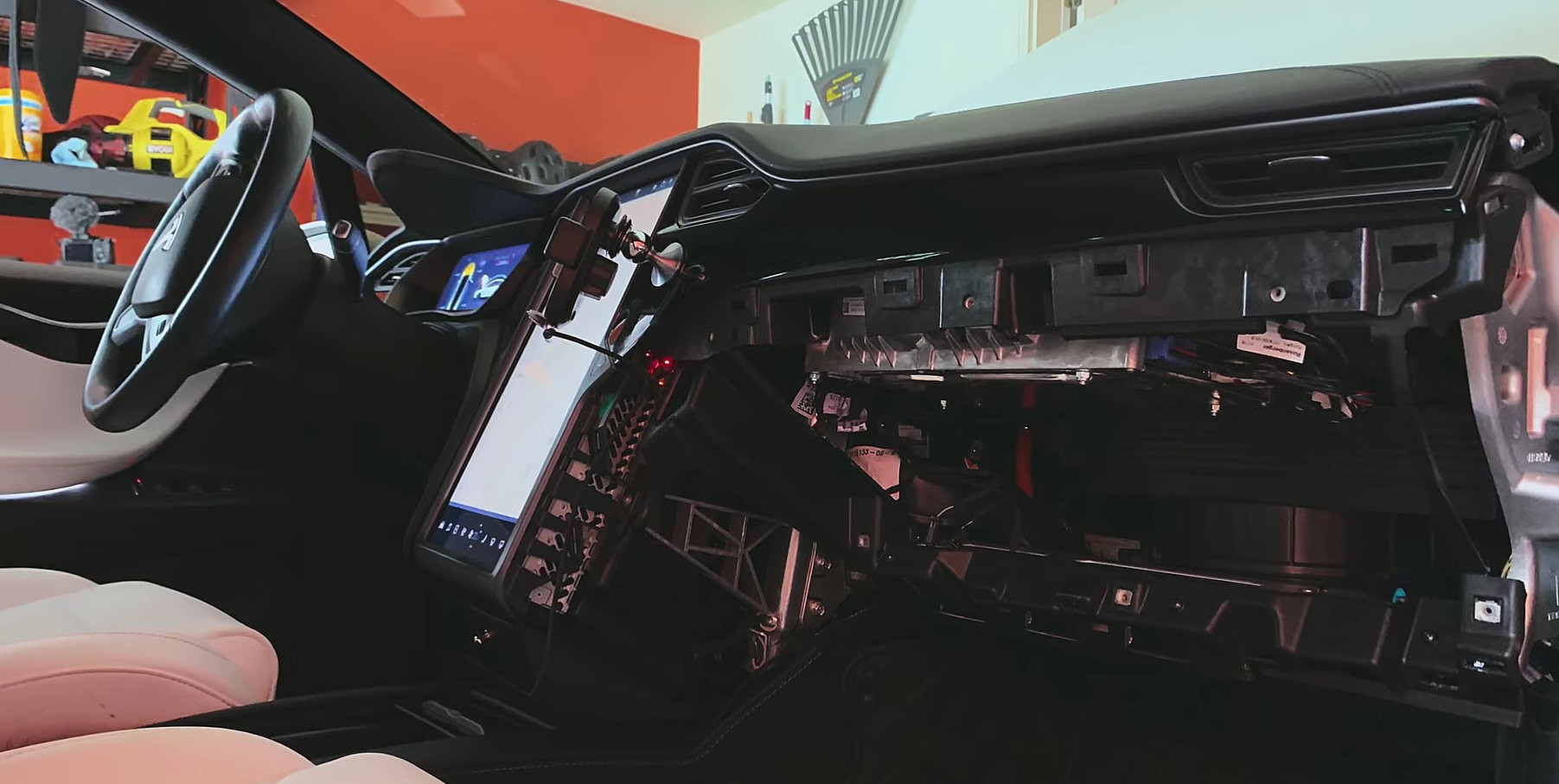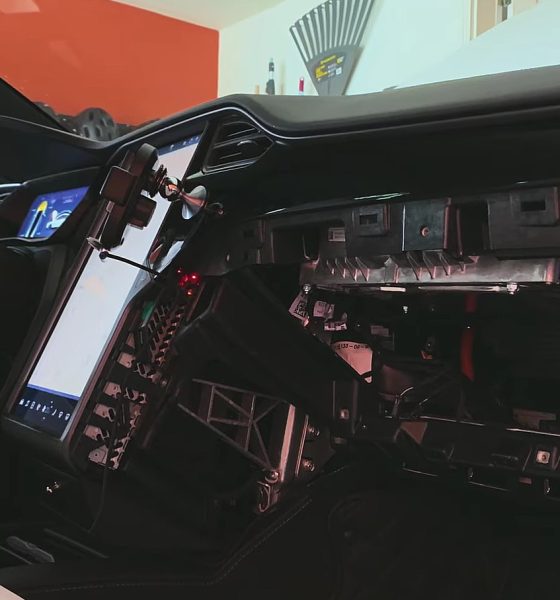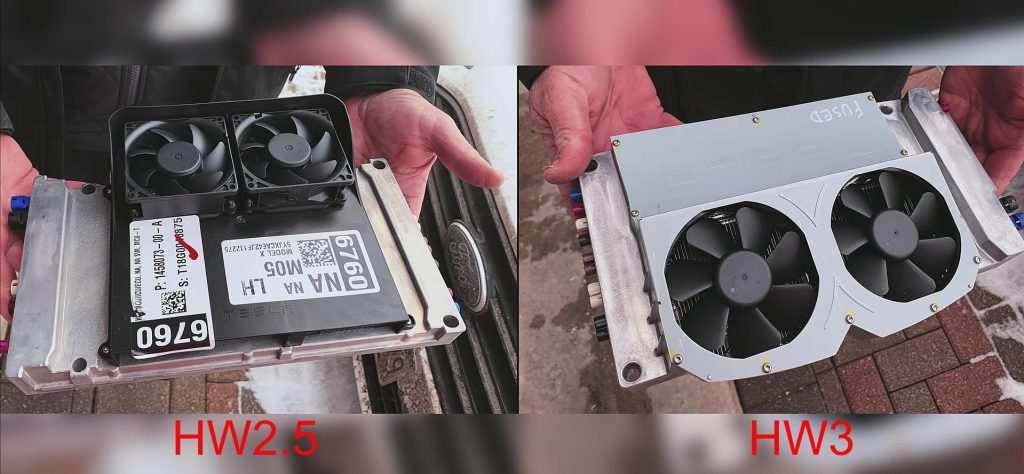

News
Tesla owner upgrades Autopilot 2.5 to 3.0 Hardware: Cost, results, and more
Back in October 2018, Elon Musk stated on Twitter that Tesla owners with HW2.5 vehicles who purchased the Full Self-Driving suite will be receiving a free upgrade to the company’s custom-designed, homegrown HW3 Autopilot computer. Today, Tesla appears to be staying true to the CEO’s word, as recently shared by a Model X owner from Canada.
A Tesla Model X P100D owner who runs the Electric Dreams channel on YouTube recently received the company’s latest iteration of its V10 software. Being equipped with Hardware 2.5, the Model X was not able to take advantage of some new features that were rolled out by the electric car maker, such as the company’s updated driving visualizations improvements.
This was a bit disappointing for the Model X owner, especially since his vehicle was equipped with Tesla’s Full Self-Driving suite. With this, the owner-enthusiast opted to schedule a home visit from a Tesla Mobile Service technician. The request: to conduct a retrofit that would replace the Model X P100D’s HW2.5 computer with Tesla’s newer, more powerful, custom-designed HW3 FSD unit.
Commenting on the experience, the Tesla owner noted that he was not really expecting Tesla to respond to his request, but much to his pleasant surprise, an appointment was indeed processed. After signing some documents, it did not take long before a member of Tesla’s Mobile Service Team drove over to the Model X owner’s house to conduct a HW2.5 to HW3 retrofit on the all-electric SUV.

Unfortunately, the Model X owner was informed that no videos were allowed during the entire HW3 retrofit process. Nevertheless, images taken by the Electric Dreams host during the new Autopilot computer’s installation show that Tesla’s HW3 does seem more robust than the NVIDIA-powered HW2.5, with its large radiators and somewhat heftier look. It took around an hour and a half for the installation to be completed and an additional two hours for the necessary firmware to be loaded into the vehicle.
After this was completed, the Model X P100D was updated once more with Tesla’s latest software. And sure enough, features that were unavailable prior to the HW2.5 to HW3 retrofit, such as V10’s driving visualizations improvements, were now enabled. Overall, it appears that Tesla’s HW3 retrofits for Model S and Model X owners who purchased the FSD suite seem to be ongoing now, and true to Elon Musk’s words, the process is completely painless. The entire upgrade was free as well, as indicated by the $0 charge for the HW3 installation.
Yet, perhaps the best thing here really is the sheer convenience of the entire retrofit process. Back in September, Tesla owner-enthusiast Sofiaan Fraval noted on Twitter that his Model S received a HW3 retrofit when he paid a visit to the service center. If the Electric Dreams channel host’s video is any indication, it appears that retrofits are now being conducted by Tesla’s Mobile Service team, and they are also available on demand.
This ultimately bodes well for Tesla’s rollout of its Full Self-Driving suite. Musk, after all, has stated that the company will push HW3 retrofits when FSD features actually warrant the additional computing power of the custom-built Autopilot unit. This was explained by Musk in a tweet back in March. “Retrofits will start when our software is able to take meaningful advantage of the Tesla FSD computer, which is an order of magnitude more capable. For now, it’s slightly disadvantageous to have Tesla FSD computer as our software is more refined for HW2,” Musk wrote.
Considering the company’s rollout of new FSD features such as Smart Summon, it appears that HW3’s additional computing power is now becoming more useful for Tesla’s advanced capabilities.
Watch Electric Dreams‘ video about his Model X P100D’s HW2.5 to HW3 retrofit in the video below.

Elon Musk
Elon Musk’s X will start using a Tesla-like software update strategy
The initiative seems designed to accelerate updates to the social media platform, while maintaining maximum transparency.

Elon Musk’s social media platform X will adopt a Tesla-esque approach to software updates for its algorithm.
The initiative seems designed to accelerate updates to the social media platform, while maintaining maximum transparency.
X’s updates to its updates
As per Musk in a post on X, the social media company will be making a new algorithm to determine what organic and advertising posts are recommended to users. These updates would then be repeated every four weeks.
“We will make the new 𝕏 algorithm, including all code used to determine what organic and advertising posts are recommended to users, open source in 7 days. This will be repeated every 4 weeks, with comprehensive developer notes, to help you understand what changed,” Musk wrote in his post.
The initiative somewhat mirrors Tesla’s over-the-air update model, where vehicle software is regularly refined and pushed to users with detailed release notes. This should allow users to better understand the details of X’s every update and foster a healthy feedback loop for the social media platform.
xAI and X
X, formerly Twitter, has been acquired by Elon Musk’s artificial intelligence startup, xAI last year. Since then, xAI has seen a rapid rise in valuation. Following the company’s the company’s upsized $20 billion Series E funding round, estimates now suggest that xAI is worth tens about $230 to $235 billion. That’s several times larger than Tesla when Elon Musk received his controversial 2018 CEO Performance Award.
As per xAI, the Series E funding round attracted a diverse group of investors, including Valor Equity Partners, Stepstone Group, Fidelity Management & Research Company, Qatar Investment Authority, MGX, and Baron Capital Group, among others. Strategic partners NVIDIA and Cisco Investments also continued support for building the world’s largest GPU clusters.
News
Tesla FSD Supervised wins MotorTrend’s Best Driver Assistance Award
The decision marks a notable reversal for the publication from prior years, with judges citing major real-world improvements that pushed Tesla’s latest FSD software ahead of every competing ADAS system.

Tesla’s Full Self-Driving (Supervised) system has been named the best driver-assistance technology on the market, earning top honors at the 2026 MotorTrend Best Tech Awards.
The decision marks a notable reversal for the publication from prior years, with judges citing major real-world improvements that pushed Tesla’s latest FSD software ahead of every competing ADAS system. And it wasn’t even close.
MotorTrend reverses course
MotorTrend awarded Tesla FSD (Supervised) its 2026 Best Tech Driver Assistance title after extensive testing of the latest v14 software. The publication acknowledged that it had previously criticized earlier versions of FSD for erratic behavior and near-miss incidents, ultimately favoring rivals such as GM’s Super Cruise in earlier evaluations.
According to MotorTrend, the newest iteration of FSD resolved many of those shortcomings. Testers said v14 showed far smoother behavior in complex urban scenarios, including unprotected left turns, traffic circles, emergency vehicles, and dense city streets. While the system still requires constant driver supervision, judges concluded that no other advanced driver-assistance system currently matches its breadth of capability.
Unlike rival systems that rely on combinations of cameras, radar, lidar, and mapped highways, Tesla’s FSD operates using a camera-only approach and is capable of driving on city streets, rural roads, and freeways. MotorTrend stated that pure utility, the ability to handle nearly all road types, ultimately separated FSD from competitors like Ford BlueCruise, GM Super Cruise, and BMW’s Highway Assistant.
High cost and high capability
MotorTrend also addressed FSD’s pricing, which remains significantly higher than rival systems. Tesla currently charges $8,000 for a one-time purchase or $99 per month for a subscription, compared with far lower upfront and subscription costs from other automakers. The publication noted that the premium is justified given FSD’s unmatched scope and continuous software evolution.
Safety remained a central focus of the evaluation. While testers reported collision-free operation over thousands of miles, they noted ongoing concerns around FSD’s configurable driving modes, including options that allow aggressive driving and speeds beyond posted limits. MotorTrend emphasized that, like all Level 2 systems, FSD still depends on a fully attentive human driver at all times.
Despite those caveats, the publication concluded that Tesla’s rapid software progress fundamentally reshaped the competitive landscape. For drivers seeking the most capable hands-on driver-assistance system available today, MotorTrend concluded Tesla FSD (Supervised) now stands alone at the top.
News
Elon Musk’s Grokipedia surges to 5.6M articles, almost 79% of English Wikipedia
The explosive growth marks a major milestone for the AI-powered online encyclopedia, which was launched by Elon Musk’s xAI just months ago.

Elon Musk’s Grokipedia has grown to an impressive 5,615,201 articles as of today, closing in on 79% of the English Wikipedia’s current total of 7,119,376 articles.
The explosive growth marks a major milestone for the AI-powered online encyclopedia, which was launched by Elon Musk’s xAI just months ago. Needless to say, it would only be a matter of time before Grokipedia exceeds English Wikipedia in sheer volume.
Grokipedia’s rapid growth
xAI’s vision for Grokipedia emphasizes neutrality, while Grok’s reasoning capabilities allow for fast drafting and fact-checking. When Elon Musk announced the initiative in late September 2025, he noted that Grokipedia would be an improvement to Wikipedia because it would be designed to avoid bias.
At the time, Musk noted that Grokipedia “is a necessary step towards the xAI goal of understanding the Universe.”
Grokipedia was launched in late October, and while xAI was careful to list it only as Version 0.1 at the time, the online encyclopedia immediately earned praise. Wikipedia co-founder Larry Sanger highlighted the project’s innovative approach, noting how it leverages AI to fill knowledge gaps and enable rapid updates. Netizens also observed how Grokipedia tends to present articles in a more objective manner compared to Wikipedia, which is edited by humans.
Elon Musk’s ambitious plans
With 5,615,201 total articles, Grokipedia has now grown to almost 79% of English Wikipedia’s article base. This is incredibly quick, though Grokipedia remains text-only for now. xAI, for its part, has now updated the online encyclopedia’s iteration to v0.2.
Elon Musk has shared bold ideas for Grokipedia, including sending a record of the entire knowledge base to space as part of xAI’s mission to preserve and expand human understanding. At some point, Musk stated that Grokipedia will be renamed to Encyclopedia Galactica, and it will be sent to the cosmos.
“When Grokipedia is good enough (long way to go), we will change the name to Encyclopedia Galactica. It will be an open source distillation of all knowledge, including audio, images and video. Join xAI to help build the sci-fi version of the Library of Alexandria!” Musk wrote, adding in a later post that “Copies will be etched in stone and sent to the Moon, Mars and beyond. This time, it will not be lost.”








